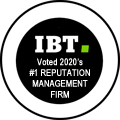I Will Pay Attention in Copywriting Class (x 100)
admin, January 26, 2012
Could you believe a student tried pulling that on me once!? As if a little wit would tickle my funny bone, excusing him of his in-class trespasses. I'm a sucker for wit; it did; I let him go.
I read a good post today regarding copywriting. The author relays a lot of good insights. The notion of the original 'hook' especially hit home and reminded me of endeavoring to captivate the attention of a different audience – a classroom of high school students. If you never had the pleasure, it's quite challenging. Teens are stuffed in small chairs for forty-five-minute blocks at numerous intervals throughout the school day while instructors (some armed with nothing more than chalk, a tweed jacket, and passion in mind) endeavor at 'attention captivation.'
The education systems don't just drop you off in the jungle; you go through some training, learning how to develop cohesive and hopefully attention-warranting lessons. Sometimes it actually works. Are your readers as fickle? Consider the following copywriting tips.
The Hook
I was never great at securing dates in high school; I always thought if I did more planning rather than awkwardly approach girls, speaking in an extempore fashion, things would've went more 'my way.' Can you relate?
That's an example of some kind of 'hook.' If I started writing about copywriting, you may roll your eyes due to the fact there's probably about a billion URLs connected to the topic. However, not all professionals readily discuss personal topics such as unsuccessful dating. I was attempting to 'hook you in' my conversation; that's a tactic many teachers use to start the lesson.
Can you think of an analogy that works well with your main topic? It could be humorous or related to current events, but mainly, you want to hook readers with something immediately relatable and a bit intriguing, so they'll want to give you a little bit more attention.
The Synopsis
By this point, the students have realized I'm not going to talk about my personal life or current events any longer; I'm going to segment into an educational lesson (boos resound throughout the crowd). I'll want to give the audience a synopsis of what's to come and what we can assume we've accomplished by the end of the lesson.
For instance, I'll tell the class my main objective and what activities we'll do to reinforce the knowledge. Actually, I used to greet every student at the door and give them their 'North Star' for the day, a sheet delineating the lesson ahead (along with a graphic representation of impending homework (more boos)). Many writers can achieve the hook and the synopsis in their intro paragraph or paragraphs.
The Information
The informational portion of the lesson is what I want the learners to ultimately "get." In this case, I want to help copywriting professionals better communicate with readers. In this case, my entire article is the "informational" portion, but as we know, "learning" entails much more than reading and listening…teachers reinforce relayed information through activities.
The Activities
Connecting with readers via text is a bit difficult; it's not like being in a three-dimensional classroom where you can interact with learners one-on-one, perhaps that's why SEO videos have grown in popularity. It's difficult to engage in activities when we're all on respective computers and residing in different locales. Perhaps a graphic organizer would help:
Pieces of the Copywriting 'Lesson'
I. The Intro
A. Hook – what is your piece about? Think of an analogy, a way to immediately get the attention of readers.
B. Synopsis – what is going to be presented throughout the piece? What are you going to teach me and how are you going to do it?
II. The Body (bulk of lesson)
A. Relay intended information to your readers
B. Could any graphics, links, videos, pictures, etc. be used to strengthen the lesson? Stimulating multiple senses enforces learning (infographs are mighty trendy and helpful in the world of online marketing these days).
III. Activities
I'm penning this graphic organizer, so readers can use it as a reference piece in the future. In some cases, you can strengthen points relayed by giving students an activity to do. For example, Ethan Lyon wrote a great piece at SEOmoz about a link-building tool. He gave readers step-by-step instructions to complement his article's textual information.
V. Closing
At the close of the lesson, a passionate teacher hopes they have relayed information in an ascertainable fashion, opening with a hook, then explaining the lesson to come, providing information and engaging students in activities to enforce learning, and finally wrangling everyone together at the end to review what was learned.
In conclusion, let me review what I have endeavored. We wanted to go about a piece of copywriting much like a lesson because we want our readers to feel like we have provided them with value, rather than merely attracting their attention for ulterior, commercial motives.
To start, we want to initially intrigue readers by throwing them a line, creating a metaphor, which is immediately recognizable. In online marketing, many writers pose a consumer-relatable 'issue.'
For instance: Are you tired of a sore back due to using a small, oddly-shaped vacuum? Cleaning shouldn't equal discomfort; you need the "XYZ" orthopedically-shaped vacuum cleaner, offering superior cleaning power and a comfortable, medically-endorsed design!
Next, we want to clearly delineate information, providing reinforcement in the form of links, graphics, videos, infographs, etc. Remember, activities always help, even if it means giving your readers some post-blogging homework (why not write at the SEOservices community section!). At conclusion, we want to go over the day's/copywriting pieces' events, reminding readers once again of the main points, hopefully steering attention to the realization they''ve learned something new.
Thanks for reading.





